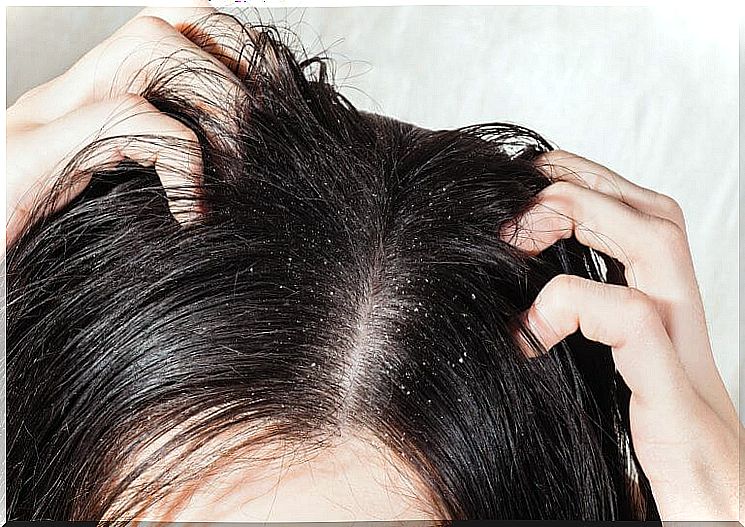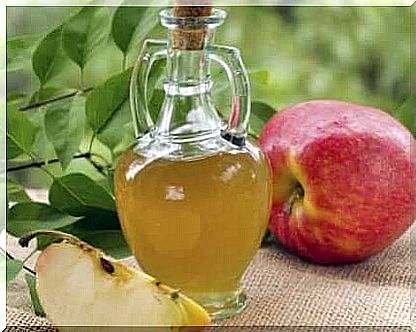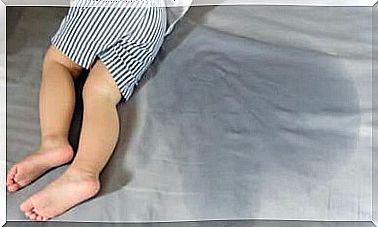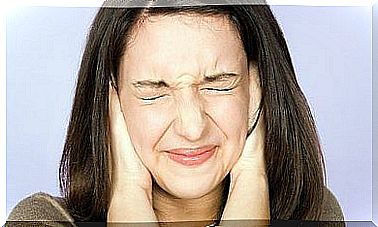6 Effective Remedies For Head Fungus
A fungal infection of the scalp must be examined and treated by a doctor. In addition, there are supportive natural ways to alleviate symptoms.

An infection of the scalp with skin fungus can occur at any age, but it usually affects children. This leads to slight flaking or scabs with inflammation and abscesses as well as hairless areas. But what can you do about head fungus ?
In this case, the first step will take you to see a general practitioner or dermatologist, as it is important to treat the infection with the appropriate medication. In addition, there are specific shampoos and various home remedies that can promote the healing process. Find out more about this topic today.
Head fungus: origin and causes
Skin fungus on the head is caused by various forms of fungus. However, the most common triggers are certain dermatophytes. A publication in the journal Mycopathologia states that symptoms can vary depending on the type and extent. The patient’s resistance and inflammatory response also play a role.
The fungal infestation can lead to slight hair loss with small scales that can only be detected with careful observation, or to severe and painful inflammation that covers a large part of the scalp. The fungus can also weaken or even prevent hair growth.
The infection is usually caused by microorganisms that multiply particularly well with constantly moist hair. It can also happen when there are injuries to the scalp and there is a lack of hygiene in this area of the body.
The fungal infection is contagious, so contact with other people must be prevented. Personal items of an infected person may of course not be shared either. It is also essential to seek professional help in order to be able to initiate effective treatment as quickly as possible.

Treatments against head fungus
After visiting the general practitioner or dermatologist for a fungal infection of the scalp, the health professional will prescribe an oral antifungal drug such as terbinafine, itraconazole, griseofulvin or fluconazole. Itraconazole and terbinafine are also currently approved for children in various countries.
If the doctor prescribes one of these drugs, they can be taken for six months or more. At the same time, the doctor may also recommend the use of a medicated shampoo. This can remove the fungal spores and prevent the infection from spreading.
How can you prevent head fungus?
The Mayo Clinic explains that a fungal infection of the scalp is difficult to prevent because it is a highly contagious disease. But certain precautionary measures can at least reduce the risk. These include the following.
- Avoid wet hair for long periods of time.
- Don’t use caps or hats that will keep your hair from drying after washing.
- Maintain good hygiene and use good quality shampoo.
- Avoid contact with uninfected animals.
- Inform children and adults about the risk of infection.
- Do not use other people’s utensils such as combs, hair clips, caps, pillows, towels, etc.
- Clean all of the utensils you use for your hair care regularly and thoroughly.
6 home remedies for head fungus
As a supplement to medical treatment, you can try various natural home remedies that can relieve symptoms. However, you need to keep in mind that the evidence on safety and effectiveness is limited, so these home remedies must be used with caution.
Even if natural alternatives are becoming increasingly popular, they cannot replace medical treatment. If in doubt, ask your doctor. If you notice an unpleasant reaction after using it, you must immediately rinse off the home remedy with plenty of cold water and of course refrain from using it.
1. Garlic solution for use on the scalp

Garlic is a home remedy for the scalp, but it can be very powerful for those who are sensitive. You should therefore try this home remedy on a small area of skin first before applying it to the whole scalp.
ingredients
- ½ cup lemon juice (125 ml)
- 6 rosemary needles
- 5 cloves of garlic
application
- Peel the garlic cloves and cook them with the lemon juice and rosemary for 10 minutes.
- Let cool a little, pour through a sieve and apply to the scalp daily.
2. Peeling with baking soda
The texture of this white powder is great for exfoliating to remove flakes and dead cells that build up on the scalp. In addition, baking soda also relieves itching. But as with the garlic solution, you should be careful with a sensitive scalp and do a sample first.
ingredients
- 1 cup of hot water (250 ml)
- 1 tablespoon of baking soda (9 g)
application
- Mix both ingredients and massage in a circular motion onto the scalp after washing your hair.
- Let it work for 5 minutes and then rinse with plenty of water.
3. Apple cider vinegar
The antifungal properties of apple cider vinegar have been researched, but this natural product has not yet received scientific support as a treatment. However, it is widely known as an alternative home remedy to treat yeast infections on the head skin.
ingredients
- ¼ cup of vinegar (62 ml)
- 1 cup of water (250 ml)
application
- Mix apple cider vinegar and water and apply to the scalp.
- After 10 minutes of action, rinse with plenty of water.
4. Yogurt and lemon
There’s no evidence that combining plain yogurt and lemon helps with head fungus. But the antifungal effects of probiotic products like yogurt are suggested due to the live microorganisms they contain.
ingredients
- ½ cup natural yogurt (100 g)
- a few drops of lemon juice
application
- Mix both ingredients and apply to the scalp. Let this treatment work for at least 30 minutes before rinsing it off with plenty of water. Then dry the scalp well!
- You can use this treatment three times a week.
5. White vinegar

Like apple cider vinegar, white vinegar is recommended in popular culture as an alternative treatment for fungal infections. It should be used in a diluted form, otherwise it can be very aggressive to the scalp.
ingredients
- ¼ cup of vinegar (62 ml)
- 1 cup of water (250 ml)
application
- Mix both ingredients and apply to the scalp after washing your hair.
- Rinse with plenty of water after 5 minutes.
6. Aloe vera

La sábila o aloe vera tiene aloína, una sustancia a la que se le atribuyen efectos antifúngicos. De hecho, estas propiedades se han reconocido en un estudio publicado en la revista médica Oman Medical Journal .
Aloe vera contains the active ingredient aloin, which is associated with antifungal properties. These were confirmed in a study published in the medical journal Oman Medical Journal.
ingredients
- Aloe gel
application
- Apply the gel to the scalp with a brush and let it work for 10 minutes.
- Then rinse with plenty of water.
Conclusion
Head fungus needs to be diagnosed and treated by a doctor. While there are additional alternative treatment options, it is best to always stick to your doctor’s prescribed therapy. In addition, precautionary measures should also be taken to prevent the spread.









